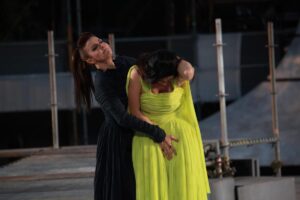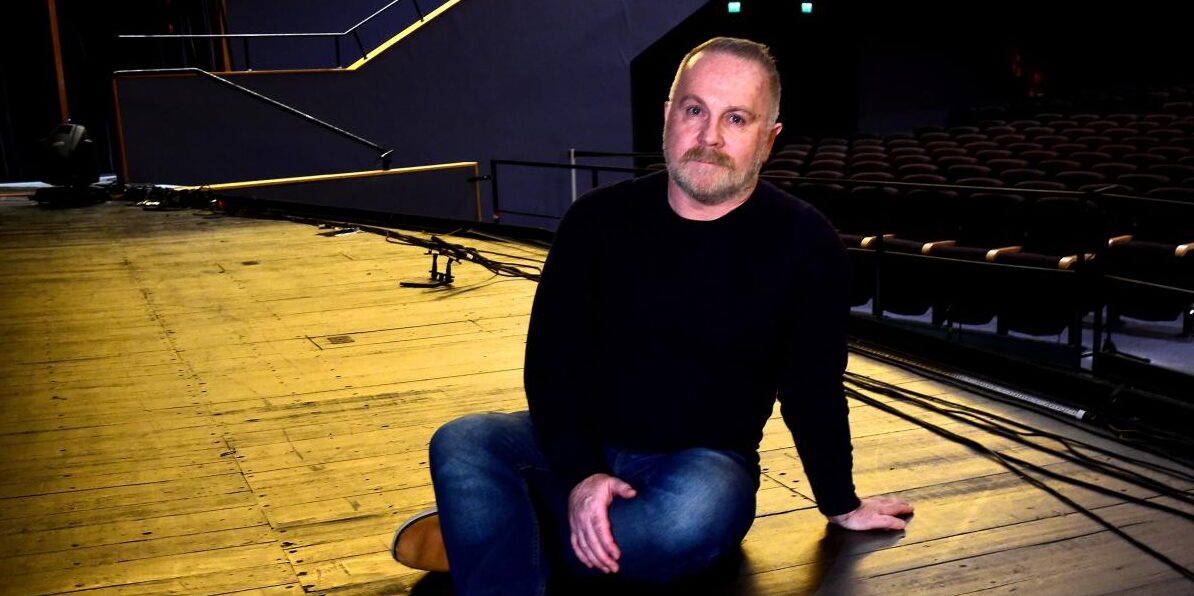Paul Curran: A Journey from Glasgow to Global Stage Director
Paul Curran (born 1964) is a renowned director hailing from Maryhill in Glasgow, Scotland. As a teenager, he moved to London, where he trained as a ballet dancer at the London Studio Centre and the Central School of Ballet before studying under Sulamith Messerer. Curran then forged an extraordinary international career as both an opera and theatre director. Recent stagings include Richard Strauss’s “Ariadne auf Naxos” at Teatro La Fenice in Venice and Euripides’ “Fedra” at the Greek Theatre in Siracusa, Sicily. As a Senior Lecturer in Translation Studies at Glasgow University specializing in Sicilian theatre, I was eager to learn more about his work on “Fedra.”
What was the biggest influence on your profession growing up in Glasgow?
The biggest influence on me as a director was the Glasgow Citizens Theatre in the seventies. That was the start of my theatrical journey. Watching their productions taught me how to tell a story on stage. My English teacher once said you needed to see a play three times: once to say you’ve seen it, twice to see the performance, and a third time to start putting it all together. So, as a teenager, I watched every play at the Citizens Theatre at least three times. It was only 20 pence for school kids back then.
I also had an amazing education at Easterhouse High School, with fantastic teachers in Music, English literature, and Languages. Languages have always been crucial to me, and they significantly shaped my career. I learned French and Italian in high school, studied Latin and Greek for a couple of years, and later learned German, Spanish, and Swedish (thanks to my obsession with ABBA). When I danced in Finland, I learned Finnish and was taught in Russian, which led to me becoming a Russian interpreter at the Edinburgh Festival. All of this laid the foundation for my international career.
How did you come to direct “Fedra” at the Istituto Nazionale del Dramma Antico (INDA) in Siracusa? How did the ancient Greek Theatre inspire your production?
INDA approached me because I am quite well known in the Italian theatre world, and they knew I spoke Italian. The ancient Greek Theatre in Syracuse, a magical place over 2,500 years old, truly inspired us. Archimedes walked here, and that history gave the space an incredible energy. We designed the play as though the space itself was a character. The openness of the theatre clarified the characters’ actions and added to the production’s magic.
How was “Fedra” translated from the page to the stage?
What I love about INDA is their commitment to producing a new translation for each play every year. This approach ensures that each production resonates with contemporary audiences and society. The Italian translation of “Fedra” was crafted by Nicola Crocetti and Francesco Morosi, both specialists in Greek classics. Their modern yet respectful translation made the text feel alive and relevant, rather than archaic.

How important is translation in your profession?
I believe that translation is essentially an interpretation of the original text. Words are immaterial without the thought behind them. A translator must understand the grammatical and cultural nuances of both the source and target languages. My teachers at Glasgow University emphasized the importance of understanding and conveying the essence of a text rather than searching for exact word-for-word equivalents. For a director, language is about the thought process and what those words convey. It’s the magic of interpretation that brings the text to life on stage.
Which version of “Phaedra (Fedra)” did you stage and why?
There are three main versions of “Phaedra” by Seneca, Euripides, and Racine. We chose Euripides‘ version, which presents Phaedra’s love for Hippolytus as the result of a spell, making it a story of mental illness rather than a forbidden affair. This interpretation offered a more compelling narrative of a woman struggling with uncontrollable emotions, aligning with the Greek concept of Eros as an overwhelming, almost destructive force.
How did you approach the acting?
My approach diverged from the traditional declamatory Italian style. I focused on the thought process behind the lines. One poignant moment is when Teseo discovers his wife’s dead body. Instead of the usual dramatic outburst, the actor delivered the line with quiet disbelief, emphasizing his profound loss. This subtlety evoked a powerful emotional response from the audience, making the tragedy more relatable and impactful.
Finally, how did you make the play relevant to today?
We explored themes of mental health, which resonated deeply with contemporary audiences. Fedra’s irrational behavior and subsequent realization created a palpable sense of discomfort and empathy. This timeless story was made relevant by highlighting the universal and enduring struggles of mental health, thereby connecting with modern viewers on a profound level. By approaching the ancient text with sensitivity and insight, we created a production that felt both timeless and immediate.
Paul Curran’s insightful and innovative direction continues to captivate audiences worldwide, blending historical reverence with contemporary relevance.

